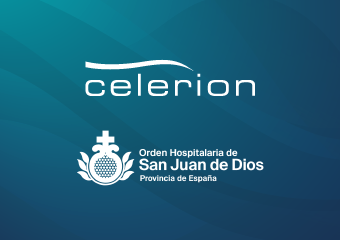How Integrated eConsent Reduces Site Burden and Elevates the Patient Experience
eConsent systems have been on the market for years. Unfortunately, most are built for sponsors to package up and deliver to clinical research sites for use on a single study. This approach is full of challenges for research teams already using multiple systems for each study – not to mention compounding access issues and inefficient workflows. Traditional, sponsor-provided eConsent systems can result in negative study impacts – from frustrating system outages to a suboptimal patient consent experience.
Here are a few challenges we’ve heard from our customers:
- Lack of standardization: With a different eConsent system for each industry study, sites cannot create or implement SOPs for consenting and require separate training for each study
- Compliance risk: With different systems and different validation approaches, the risk for variation is high, impacting the quality of the consent process
- Accrual risk: If the eConsent system requires a shared physical device, the potential number of patients enrolled is limited by device availability and uptime
- Duplication of work: When the eConsent system is down, teams must revert to paper to obtain consent during the downtime
- No visibility: When eConsent is disconnected from the site’s research workflows and systems, study teams are forced to duplicate work to track a patient’s consent status and risk protocol deviations
And – one of the biggest challenges of most eConsent systems – is that the patient doesn’t have immediate digital access to their consent document after they sign.
We believe it is critical to provide tools to sites that empower their patients’ participation in research and education with direct, digital access to their study information and documents.
Sites need to adopt an eConsent system that gives their patients an active role in the clinical trial process without being required to travel to the site. Research participants should not have to navigate 60-page printed documents, emails, faxes, and mailings to get information critical to understanding the clinical trial.
We recommend sites look for an eConsent system that elevates the patient experience instead of complicating it with the following:
1. One eConsent system that can be used across all studies
When sites adopt a system purpose-built for them and integrated into their workflows, they can drive efficiencies and quality across all studies and provide a consistent patient experience.
2. Validated eConsent system
Many sites do not have the budgets or expertise to be left on their own to validate an eConsent solution. Sites should look for an eConsent technology partner with a strong understanding of regulatory requirements and who delivers a validated solution, reducing this burden on sites.
3. Patient-facing technology
Look for a system that empowers the site to give patients immediate access to the tools to participate in the consenting process virtually, instead of relying on PDF printouts, a site-owned device, or the extra disruption to their lives of unnecessary in-person study visits.
4. Reliable partner
Partner with a technology company that has demonstrated experience and knowledge in research regulations and meets the highest quality, security, and reliability standards. Technology is an important part of day-to-day operations, and system outages are disruptive.
Find a technology partner you can trust with a reliable track record, and who is innovating to help you prepare for the future.
5. Seamless Integration and Connectivity
Look for solutions that are seamlessly integrated into existing workflows for your teams. eConsent should not be another purchase or a disconnected module in your research technology tools. eConsent should automatically be integrated into your existing patient recruitment, management, and study documentation workflows with the added benefit of giving your patients an improved experience with study teams.
Clinical research sites shouldn’t have to pick and choose – all of these requirements matter for sites to provide the best possible patient experience during a clinical trial. Veeva works closely with sites and sponsors to understand how we can provide technology to sites that serve all these needs. Learn more about Veeva eConsent here.
Author: Bree Burks, RN, MSN & Anna Argyris, MSHS, CCRP
Want exclusive tips and resources?
Be the first to recive upcoming news, join our mailing list.
Subscribe



